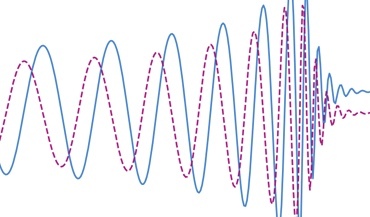 Gravitational memory and spacetime symmetries
Gravitational memory and spacetime symmetries
Symmetries of spacetime infinitely far away from gravitational fields may hint at new laws of nature
Boris Goncharov, Xing-Jiang Zhu, Eric Thrane
arXiv.org | MNRAS
In this project, we performed an analysis of millisecond pulsar spin noise using the first data release (DR1) of the International Pulsar Timing Array (IPTA) collaboration. We were particularly interested in determining whether the amplitude of timing residuals, induced by this noise process, keeps growing with longer observations or eventually flattens. We also considered a physical model of millisecond pulsar spin noise, where the noise process is driven by the superfluid turbulence in the core of a neutron star. Our key results:
 Gravitational memory and spacetime symmetries
Gravitational memory and spacetime symmetries
Symmetries of spacetime infinitely far away from gravitational fields may hint at new laws of nature
 The nanohertz gravitational wave background
The nanohertz gravitational wave background
Is the common-spectrum process observed with pulsar timing arrays a precursor to the detection?